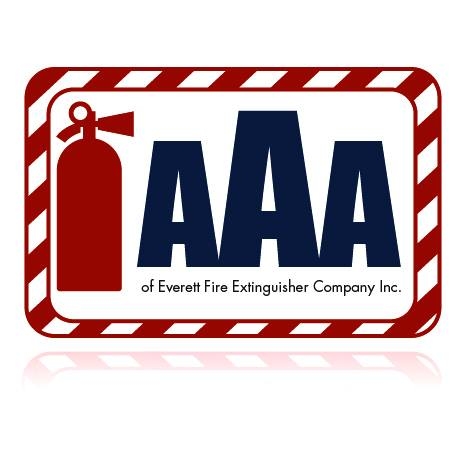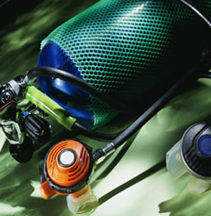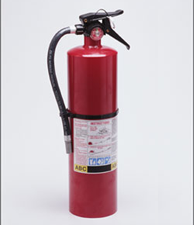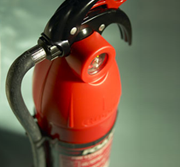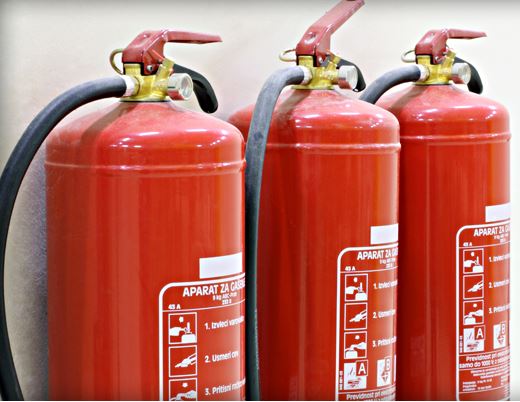Propane and gasoline in a home or garage can be a possible firestarter. Keep them stored safely away from your vehicle and any sources of a spark.
It’s important to remember that having only one fire extinguisher in your corporate facility could pose a problem if the fire blocks your access to it. When you need multiple fire extinguishers to feel safe, we can help you get the best ones for your needs.
In most cases, you’ll be required to do more than to simply install a fire sprinkler system in your building and assume it works. Rest assured that we’re always available to handle the annual certification of this important fire safety accessory.
Did you know that it is possible to receive a discount on homeowner’s insurance if a home fire sprinkler system is installed? If you are thinking about installing a fire sprinkler system in your home, check the homeowner’s insurance policy for any potential benefits.
Always ensure that your fire extinguishers are unobstructed, visible and the operating instructions are legible. It is also important that the seals and indicators are intact, and that the extinguishers themselves are well maintained.
Water is one of the most commonly used extinguishing agents for Type A fires (involving paper, wood, or other combustibles). Air pressurized water extinguishers (APWs) are filled about two-thirds of the way with ordinary water and then pressurized with air.
Automatic fire sprinklers are highly effective and reliable elements of total system designs for fire protection in buildings. According to an American Housing Survey, 4.6% of occupied homes, including apartments, had sprinklers in 2009, up from 3.9% in 2007, and 18.5% of occupied homes built in the previous four years had sprinklers.
If you love to grill outdoors, invest in a few critical fire safety accessories. Have at least one fire extinguisher readily at hand and keep a fire blanket nearby to help quickly extinguish stubborn grease fires.
An extinguisher that is used for electrical fires, such as in wiring, fuse boxes, energized electrical equipment and other electrical sources, carries a Type C label and this is shown in a circle on the extinguisher.
Fire extinguishers require stringent maintenance to ensure they will work when needed. Maintenance should be carried out by a specialist contractor 12 months after installation of a new extinguisher and at 12 month intervals thereafter.
Pre-action fire sprinkler systems are specialized for use in locations where accidental activation would be quite disastrous, such as in museums with rare art works, manuscripts, and books, or data centers that contain extensive amounts of computer equipment.
When it comes to fire safety equipment, it’s something you may never have to use. Of course, in a fire anywhere in your home or office, it’s best to always error on the side of caution.
Fire extinguishers are both color-coded and given different letters to indicate their purpose. For example, a Class A extinguisher is designed for normal combustibles, such as paper, wood, and rubber, while a Class B model is designed for all types of flammable liquids.
Did you know that (Class K) wet chemical fire extinguishers have an A rating? This means that they are able to suppress fires caused by hot grease, hot oil, or fuel. Class K extinguishers use a misting discharge nozzle that prevents splashing, keeping hot oils and grease from spreading.
When attempting to extinguish a fire, it is essential to know what is on fire and what started the fire. This is because different extinguishers are designed for different types of fires and could even be dangerous if used on the wrong type of fire. If you are unsure, just evacuate and call 911.
Dryer lint is one of the most flammable substances in your home. Be sure to clean it out regularly, keep your dryer thoroughly maintained, and keep a fire extinguisher close by to prevent what could be a devastating fire.
Did you know that not all fire extinguishers are appropriate for every purpose? Depending on the nature of your business, you may find that it’s necessary to have different types of extinguishers to deal with the different types of fires.
A Type B fire extinguisher will have the letter in a square and likely a picture of a gas can. This is because this type of fire extinguisher should be used on flammable liquid fires, like gasoline, oil, or grease.
You'll have to consider several different factors when you're choosing and setting up your emergency lighting and signs for your fire safety plan. Energy efficiency and environment are two important ones. A fire safety company can help you choose the right lights and signage for your building.
Don’t buy the smallest possible extinguisher since they can fully discharge in eight seconds. The extinguisher must be large enough to fully put out a fire.
While you can’t control whether people leave candles unattended or are careless when they cook in their own apartment, you can take precautions to keep a small fire from spreading to other occupants. If your multi-family property doesn’t already have fire sprinklers, it’s time to consider an installation.
Did you know that using the wrong type of extinguisher on a fire can be dangerous? For example, Class A fire extinguishers that contain air-pressured water should never be used on electrical or kitchen fires.
